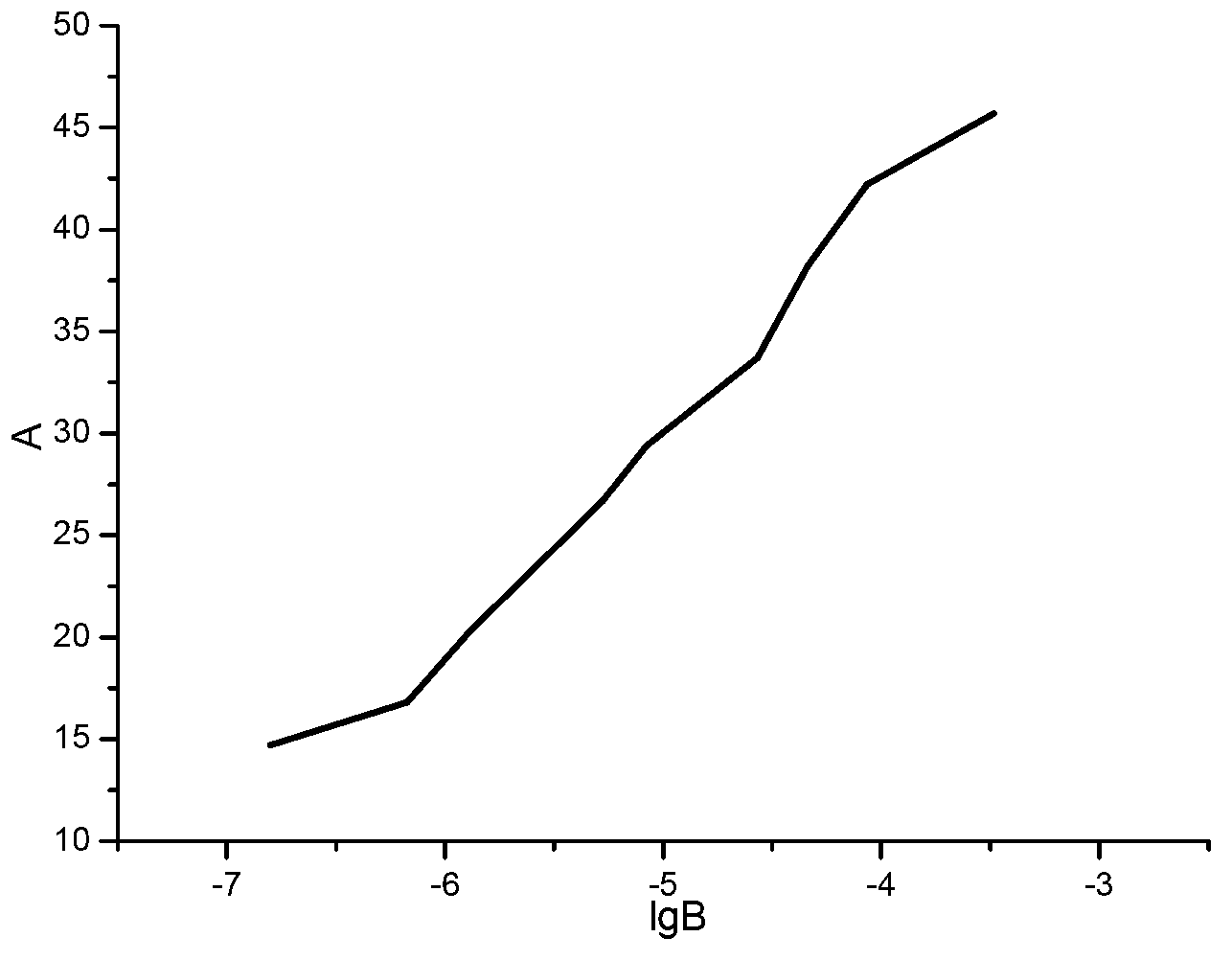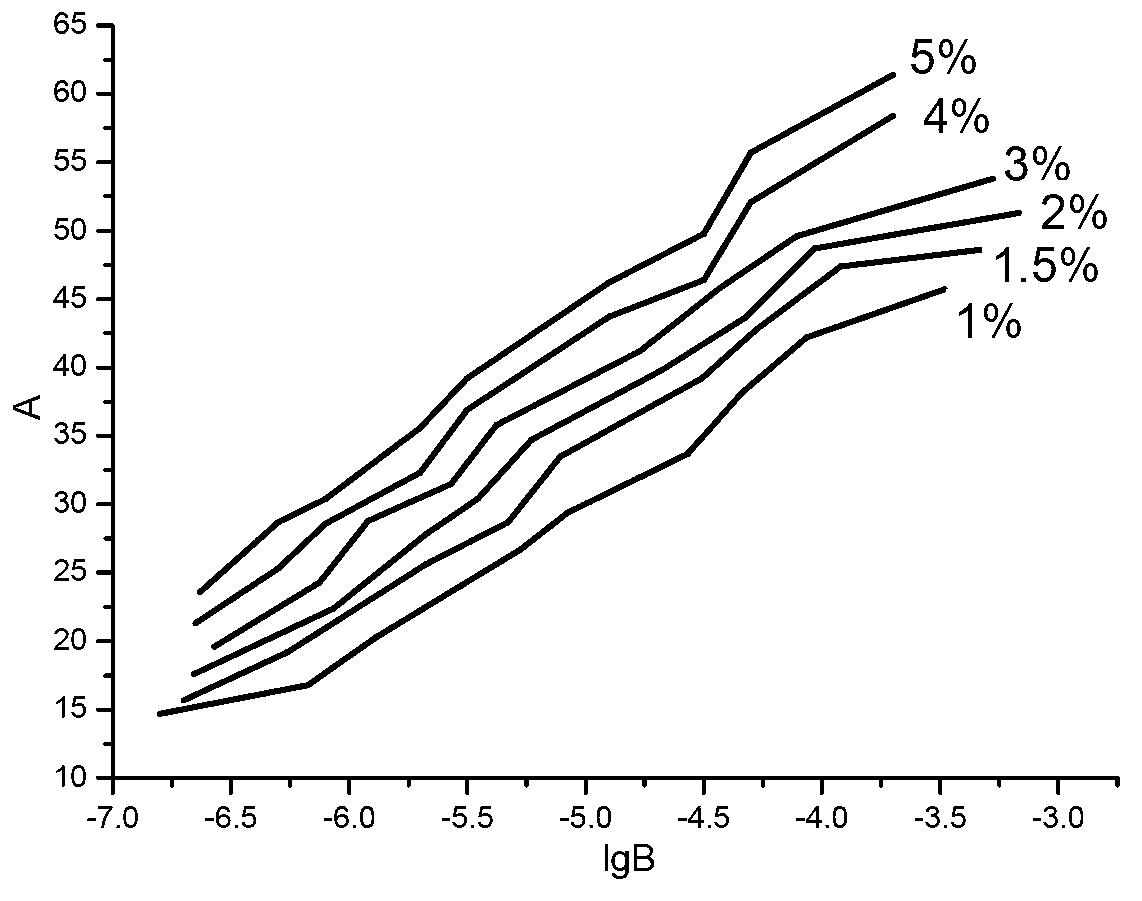Determination method for dispersibility of carbon nano-tubes in resin
A carbon nanotube and determination method technology, applied in nanotechnology, measuring device, particle size analysis and other directions, can solve the problems of cumbersome sample preparation, long detection period, difficult real-time detection, etc., to overcome the cumbersome steps, reduce the test cost, The effect of the simple and easy measurement process
- Summary
- Abstract
- Description
- Claims
- Application Information
AI Technical Summary
Problems solved by technology
Method used
Image
Examples
Embodiment 1
[0045] Step (1), using different methods to prepare epoxy resin with a mass percentage of carbon nanotubes of 1%, including mechanical stirring, ultrasonic dispersion, and shear dispersion, among which three different methods of mechanical stirring, ultrasonic dispersion, and shear dispersion The process conditions were changed respectively, and a total of 9 kinds of epoxy resins with a mass percentage of carbon nanotubes of 1% were prepared as the resins to be tested, numbered 1-9. The carbon nanotubes are multi-walled carbon nanotubes modified by carboxylation.
[0046] Step (2), first clean the surface of the scraper fineness meter and place it stably, pour the epoxy resin numbered 1 with a mass percentage of carbon nanotubes of 1% into the bottom of the groove of the scraper fineness meter. The specification of the scraper fineness meter is 0-100μm.
[0047] Step (3), the two-handed scraper blade is pressed longitudinally to the groove of the scraper fineness meter at an an...
Embodiment 2
[0052] Step (1) to step (6) are the same as in Example 1.
[0053] Step (7), change the mass percentage of carbon nanotubes in the epoxy resin to be tested to 1.5%, 2%, 3%, 4%, and 5%, repeat steps (1) to (5), and measure A series of data of fineness A and dispersibility B, obtain the relationship curve of fineness A changing with dispersibility B when the content of carbon nanotubes in a group of epoxy resins to be tested is different (comprising 1 in embodiment 1, altogether 6 curves). Such as image 3 Shown is a set of relationship curves in which the fineness A varies with the dispersion B in Example 2 of the present invention.
[0054] In practical applications, for example, given the epoxy resin to be tested with a carbon nanotube content of 3%, follow the above steps (1) to (3) to first measure the fineness A of the epoxy resin 2 , and then find a curve corresponding to an epoxy resin with a carbon nanotube content of 3% from the relationship curve in step (7), and o...
Embodiment 3
[0056] Step (1), using different methods to prepare vinyl ester resins with a mass percentage of carbon nanotubes of 3%, including mechanical stirring, ultrasonic dispersion, and shear dispersion, wherein three different methods of mechanical stirring, ultrasonic dispersion, and shear dispersion In the method, the process conditions were changed respectively, and a total of six kinds of vinyl ester resins with a mass percentage of carbon nanotubes of 3% were prepared as the resins to be tested, numbered 1-6. Wherein the carbon nanotubes are multi-walled carbon nanotubes modified by hydroxylation.
[0057] Step (2), first clean the surface of the scraper fineness meter and place it stably, and pour the vinyl ester resin numbered 1 with a carbon nanotube mass percentage of 3% into the bottom of the groove of the scraper fineness meter. The specification of the scraper fineness meter is 0-150μm.
[0058] Step (3), the two-handed scraper blade is pressed longitudinally against th...
PUM
 Login to View More
Login to View More Abstract
Description
Claims
Application Information
 Login to View More
Login to View More - R&D
- Intellectual Property
- Life Sciences
- Materials
- Tech Scout
- Unparalleled Data Quality
- Higher Quality Content
- 60% Fewer Hallucinations
Browse by: Latest US Patents, China's latest patents, Technical Efficacy Thesaurus, Application Domain, Technology Topic, Popular Technical Reports.
© 2025 PatSnap. All rights reserved.Legal|Privacy policy|Modern Slavery Act Transparency Statement|Sitemap|About US| Contact US: help@patsnap.com



